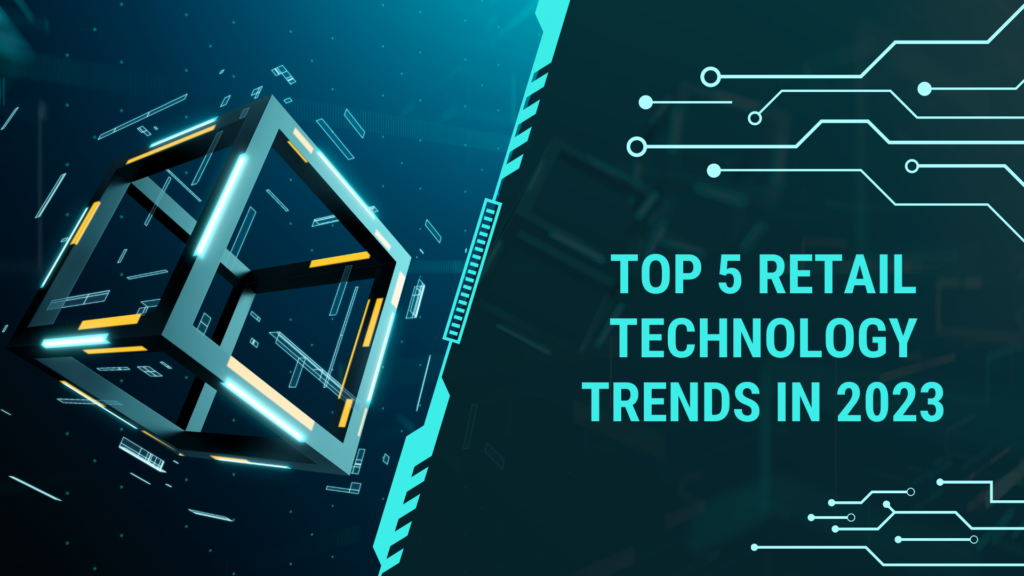Top 5 Technology Trends for 2023

For the second year, BearingPoint questioned technology experts to determine which technological fields would receive the most attention in 2023. Over 1,200 participants said that AI is still the most popular trend, albeit with a new emphasis. This year’s newcomer, Metaverse, is considered as being crucial in increasing corporate sustainability. The fourth spot was retained by embedded data and analytics for a second consecutive year.
Also Read: –Top 5 Retail Technology Trends In 2023
According to BearingPoint’s Stefan Pechardscheck, Global Leader Technology, “Our new technology trends contain solutions to the most urgent concerns businesses face. Our top 5 technological developments for 2023 are once again paradigm-shifters and have the potential to inspire fresh company strategies. Sustainability through substitution or optimization will also play a significant part in society, as will new trends like the metaverse, which blends digital and real-world experiences. All of these technologies are advantageous to our clients. Companies now have additional opportunities to capture value as the tools and possibilities advance.
Below Are The Top 5 Technology Trends For 2023, According To A Report By Bearingpoint.
- Generative AI
- Metaverse
- Cloud-native platform
- Embedded data and analytics
- Zero trust at scale
Generative AI: Using new data to speed up innovation
Any artificial intelligence that uses unsupervised learning methods to produce new digital things including images, video, audio, text, and code is referred to as generative AI. A generative AI model’s goal is to produce artificial data, which forces the model to draw conclusions about the most crucial training data.
While deep fakes and data journalism are two areas where generative AI is frequently employed, the technology also plays a significant role in automating the tedious tasks involved in digital picture and audio correction. Additionally, generative AI is being utilised experimentally in business to enhance data augmentation for robotic process automation as well as in manufacturing as a tool for rapid prototyping (RPA).
Metaverse – Merging Digital and Real
The metaverse, a network of 3D virtual worlds with VR and AR headsets promoting social connections, blurs the barriers between the physical and digital worlds, between the actual and virtual realities. The metaverse is a persistent, dynamic digital world that gives users a sense of control, social presence, shared spatial awareness, and access to a sizable virtual economy with significant societal implications.
The metaverse also promises to reduce carbon emissions, whether through the replacement of actual goods and meetings with digital ones, the substitution of in-person interactions with virtual ones, or the creation of digital twins that will aid in the improvement of the real world.
Cloud native platform: New approaches to product development
Development teams are now embracing cloud frameworks and platforms to create new applications since the majority of public and private businesses have migrated legacy information systems to the cloud using the 6R approach (rehost, replatform, repurchase, rearchitecting, retire, and retain). This new approach to developing products is driven by traditional cloud promises such as accelerated product development cycles, scalable managed services, innovative cloud features (serverless, machine learning, advanced analytics), and evergreen, resilient and hyper-automated technologies. This revolution in app development presents difficulties in managing change, vendors, and costs, and it has a significant impact on how IT firms handle personnel and culture.
Embedded data and analytics – Companies get lost without prioritized use cases
Businesses that are successful have a holistic strategy and continually integrate data and analytics into their operations. They keep an eye on new trends and adjust accordingly but always move along a roadmap with initiatives and use cases that drive them toward their goals. Businesses must establish and select meaningful use cases and insights while implementing a comprehensive strategy. Data analysis won’t be successful without a plan and use cases like these.
Zero trust at scale – Cybersecurity at the core of IS architecture
Companies operate increasingly in complex business ecosystems requiring connections to IT assets from a diversity of users from various organisations connecting from anywhere and from any device. It all happens in a cyber threat explosion context, urging the promotion of zero trust as a core architecture principle. CISOs (Chief Information Security Officers) have to implement, at scale, a comprehensive, dynamic and granular set of identity and access control solutions.
About BearingPoint
BearingPoint is an independent management and technology consultancy with European roots and a global reach. The company operates in three business units: Consulting, Products, and Capital. Consulting covers the advisory business with a clear focus on selected business areas. Products provide IP-driven digital assets and managed services for business-critical processes. Capital delivers M&A and transaction services.
BearingPoint’s clients include many of the world’s leading companies and organisations. The firm has a global consulting network with more than 13,000 people and supports clients in over 70 countries, engaging with them to achieve measurable and sustainable success.
Also Read: –What Is the Metaverse Meaning- Everything You Need to Know





